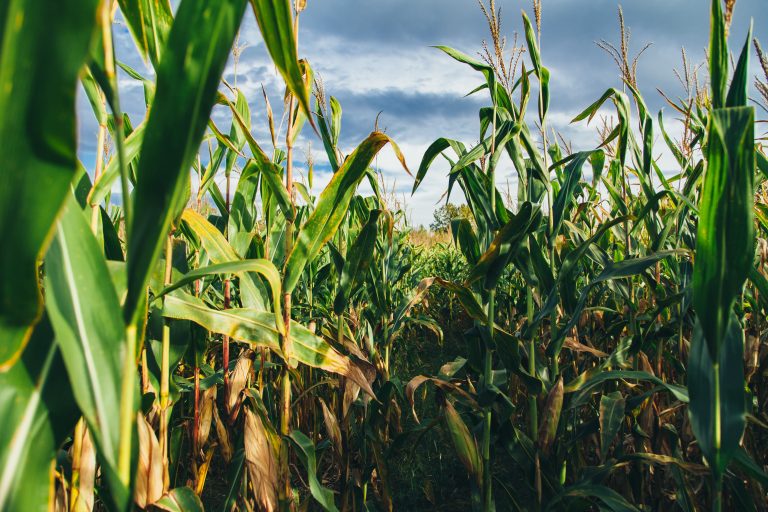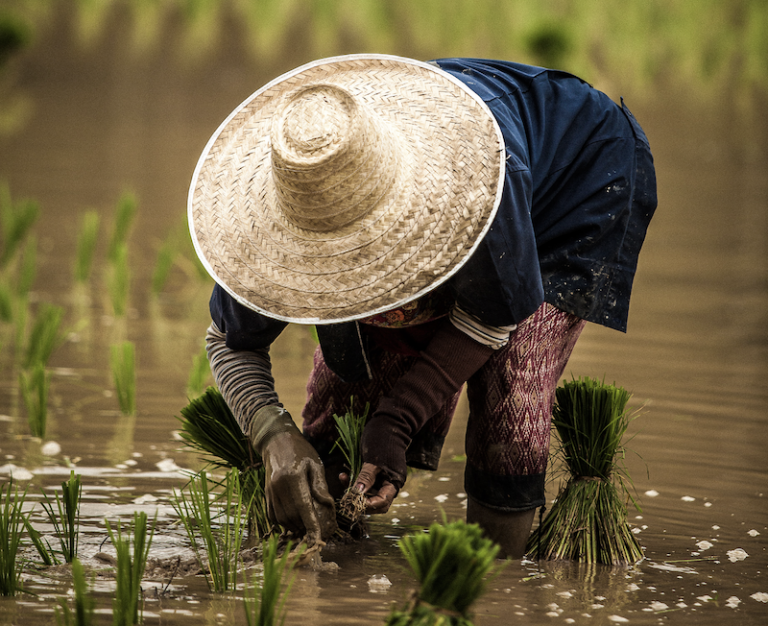Commodity trade and risk management (CTRM) solutions are by default complex and rich in functionalities to support all the flexibility that characterizes the industry. That’s why the full Agiblocks CTRM suite offers a wide variety of detailed features and functionalities. In many cases specialized for a certain commodity or commodity group. You can read all about it here.
The specialization of our software is what makes it the foremost CTRM solution for agricultural commodities in general, and for the biggest soft commodities specifically; Sugar, Coffee, Cocoa and Grains. That’s why we would like to address these commodities in depth, as well as explain to you how Agiblocks caters to them with unrivalled dedication. In this fourth and final episode of our series, we will be focusing on grain.
In chapter 1, we will briefly talk about the history of the product and several aspects that help explain why grains is such a complex commodity. In chapter 2, we’ll turn the spotlight on Agiblocks’ prowess to handle that complexity in ways that no other CTRM solution can.
1. The complexity of grains: an introduction
Grain is the collective term used to describe editable seeds harvested for human and animal consumption. Various grain types are an integral part of diets across the world which causes an increasing demand and volatility for these commodities. As grain is a collective term that is used for anything from wheat to barley and rice, it is essential to work in a CTRM system that supports all the various specifics. We’ll first discuss some of the more prominent types.
1.1 Grain types
The different types of grain each have their unique specifications and qualities. Different areas around the world show a specific preference for a certain type of grain. The production requirements for each grain type are very weather specific and therefore the major production sites are located in areas across the world where conditions are best.

1.1.1 Wheat
Wheat is a grain consumed in a variety of different food types, by both humans and animals. It is the third most-consumed grain-type behind corn and rice. It is however the number one in terms of acres used for growing this grain. China, India, Russia, United States and France are the biggest producers of wheat (in decreasing order).
1.1.2 Corn
Corn or Maize, as it is called in most countries outside the United States and Canada, is the biggest plant of the various grain types. Corn is the most-produced grain worldwide and the return-yield is continually increasing. The United States are the biggest producers of corn, followed by China, Brazil, Mexico and France. Corn is a major part in diets across the globe and can be found in various uses in food preparation. It is also used as animal fodder and is a much-used ingredient in the creation of bio-fuel.
1.1.3 Barley
Barley is a grain which will most commonly be known for its use in the production of alcoholic beverages such as beer, but is also consumed in various diets across the world and used as animal fodder. Barley is a popular crop for farmers as it is more resilient to weather effects and can be grown in different climates. Russia is currently by far the biggest producer of barley, followed by Ukraine, France and Germany.
1.1.4 Rice
Rice is a main ingredient in the diet of billions of people. It is consumed as a main course in many cultures or serves as a side-dish. Rice is popular thanks to its complex carbohydrates and low-fat levels, which makes it a healthy food type. Rice production is quite different from other grain types as it grows primarily in highly moisture and hot climate. It grows in low tide of water and the process of harvesting rice is very labor intensive which makes countries with low labor costs very suitable such as China, Indonesia and Vietnam.

1.2 Production and processing
Grain production is strongly influenced by global demand due to the rising population growth and the weather is a significant factor in price discovery.
After the harvest, the loose grain is usually stored in large concrete silos, these silos can be linked together using conveyor belts, once linked it is called a grain elevator. The use of concrete makes a silo moisture-resistant and airtight, which better protects the grain. The grain is dumped on the bottom of a silo, this will be done by bucket elevator which transports the grain from a pit to the top of the silo.
At this point the grain will be dropped and deposited at the bottom of the silo. Because it is stored in bulk the grain can easily and quickly be loaded onto trucks or trains or in containers. The grain stored in the silos can easily be loaded through spouts at the bottom of the silo. A carrier can be placed under the spout and once it opens, gravity pushes the grain down, due to the weight of all the grain in a silo. Due to the number of separated silos in a grain elevator, it is possible to store different types of grain.
2. Managing Grain’s Complexity in a CTRM Solution
CTRM solutions for grain need to handle the general complexities of any particular commodity, along with providing features such as usability, performance and integration. However, grain trading has a number of very specific aspects to it that not every CTRM solution will be able to handle with ease, or even at all. We will walk you through some of them, as Agiboo has made it its mission to handle all of them – with Agiblocks.
2.1. Divisibility
First and foremost: Grain is an umbrella term for everything from wheat to corn, barley and even rice, as previously discussed. In addition, oilseeds are often raked into the mix too. That divisibility makes it a very complex commodity. That means we’re obviously dealing with multiple market prices for all these variations, but more than that there’s a multitude of differentiating factors within one overall commodity that needs to be addressed, ranging from quality factors in wheat and the various uses for corn to all available varieties of rice, for instance. All of that needs to be covered in the software you use to collect and trade all of your contracts. All of it is, of course – in Agiblocks.
2.2 Logistics: storage
Grain is stored in huge silos that can hold up to 100 tons of product. However, due to the local nature of grains both in terms of production and processing, the contents of a particular silo, no matter the quantity, are usually not sourced from one seller, nor are they intended for one single buyer. That means any silo holds up to N quantities of grain, where company A is responsible for 2 tons, company B holds 5 tons, and so on.
A full silo of corn therefore may look like a rather straightforward deal in terms of trade and traffic (Company A has 100 tons of corn, Company B would like to buy 100 tons of corn), but in reality, it is a complicated mix of stakeholders. Our Agiblocks CTRM software has all the necessary tools to reflect that reality – including Weighbridge Integration to increase efficiency and manage the potentially multi-location architecture of the deal.
2.3 Logistics: Transport
Another logistics related issue that sets grains apart from sugar, cocoa and coffee is the fact that grain is very often transported by train. Canada and the countries surrounding the Black Sea, for instance – two important regions for grain – have an entire logistics chain set up in which trains are used in combination with railroad silos.
Bulk shipments are also substantially different, as cocoa for instance is placed in big bags used to fill containers, whereas grain can fill an entire Panamax ship.
These deviating dimensions with respect to commodity logistics are reflected in Agiblocks.
2.4 Exchanges: lots of exchanges
Grain Futures are heavily traded on exchange across the globe. Wheat Futures contracts are being traded on three exchanges in the United States: Chicago Board of Trade (CBOT), Kansas City Board of Trade (KCBT) and Minneapolis Grain Exchange (MGEX). The main exchange for wheat futures contracts is the CBOT.
Corn Futures are also traded on the Chicago Board of Trade (CBOT). Barley Futures are being traded on the Inter Continental Exchange (ICE) Canada.
Similar to wheat and corn futures contracts, the Chicago Board of Trade (CBOT) is the main exchange for trading rough rice futures.
Not only are there many markets and exchanges, but there’s also a strong influence of regions on the pricing. For example, Black Sea Grains (/Wheats), grains that grow around the Black Sea, are substantially different from the products of Canada. In other words, there is not only a variety of different types of grain within the overall commodity, the various ‘sub commodities’ also have very different properties, all affecting the market price.
Furthermore, different regions have different ways of trading. In Canada, one might do business with a huge GMO farm that supplies all your corn needs, whereas rural areas in Mexico and France are made up of a lot of small farmers, many of which might not even have the capacity for essential elements of trading such as a proper financial administration. In other words, when you source your product from these local producers, you might have to sit down and create the appropriate invoices.
On the other hand, you could have Agiblocks do that for you.

2.5 Differentials and derivatives
Another factor that plays into pricing for grain is the effect quality has, on a level that cannot be compared to cocoa or sugar. That’s because the quality of grain is assessed on the basis of a lot more parameters than those other commodities. Uniform moisture contents, high test weight, absence of foreign material, low percentage of discolored, broken and damaged kernels, low breakability, high milling quality – et cetera, et cetera. All the variables have to be accounted for in your software solution when trading grains.
Furthermore, location is a huge part of pricing as well. A ton of wheat could go for 200 dollars, whereas a ton of cocoa might set you back 2000 pounds – making freight a much more important component for grains. Cocoa is, in general, produced to be exported, so it’s all send to ports for shipping. Distribution of grains is much more, pardon the pun, fine-grained: more local cultivation, more local storage, much more local processing.
2.6 The GMO Factor
The last variable we’d like to discuss here is the ‘GMO factor’. In the coffee and cocoa trade, for instance, quality-control and to a more important degree sustainability of production is reflected in UTZ certifications. In the production of grain, or soy beans, there is an increasing amount of GMO technologies. A GMO, or genetically modified organism, is a plant, animal, microorganism or other organism whose genetic makeup has been modified in a laboratory using genetic engineering or transgenic technology.
Now where not saying that UTZ certification has anything to do with GMO, but on a practical level the GMO factor in grains is something that sets it apart from most other commodities, so it does need to be addressed here. For instance, agricultural commodities produced in North America by means of GMO technologies can’t be imported into EU countries just as easily as product from the Black Sea-region can. In other words, this creates another distinctive factor that sets commodities apart from one another.
Note that these are just a few of the specific issues around grain trading that are often either not supported in a generic CTRM solution, or may require some form of work-around to handle. And those work-arounds don’t come easily. Because some of these aforementioned factors may seem like small areas of functionality, to add them to an existing CTRM is a major undertaking as that the functionality needs to work across the system. For example, in position management reporting, for hedging purposes where traders need to hedge small quantities of commodities individually; both currencies and terminal markets, where it impacts pricing, price formulae and so on.
Adding a small area of specificity for a commodity has huge ripple effects across the entire solution that also need to be considered. As a result, anyone looking to procure a CTRM solution for grain trading should ensure that the short-listed CTRM solutions are able to handle such specifics along with all of the other expected functions and features of a good and usable solution. This actually narrows the field of potential solutions quite considerably.
3. Agiblocks: a true grain solution
Agiblocks is a multi-commodity capable system out of the box. Built on modern technology, it provides functionality for trading physical commodities and their terminal market instruments. It supports contract management, logistics fulfillment, forex and hedging, and it has tools for real-time risk analysis and risk management. It supports both trading management and financial management from the same source of data and within the same application. Its modular structure allows users to implement an end–to-end solution or to select individual functions to implement only the functions that are needed.
While Agiblocks is a strong contender across many commodities, it is extremely strong in terms of meeting the specific requirements of the grain markets with a number of customers implemented and using the software to support their grains trading businesses. Agiblocks provides all of the functionalities discussed above that are specific to grain.
Experience Agiblocks and judge for yourself
Experience our CTRM software solution for free and get a front-row seat to all the benefits Agiblocks has to offer with our free demo. The full range of Agiblocks functionality is available within the demo environment for your browsing leisure. Familiarize yourself with the tools and features of our powerful and agile software solution and find out how you can make the daily practices of commodity trade and risk management more efficient. Fill out the form on agiboo.com/demo and we will get back to you.
